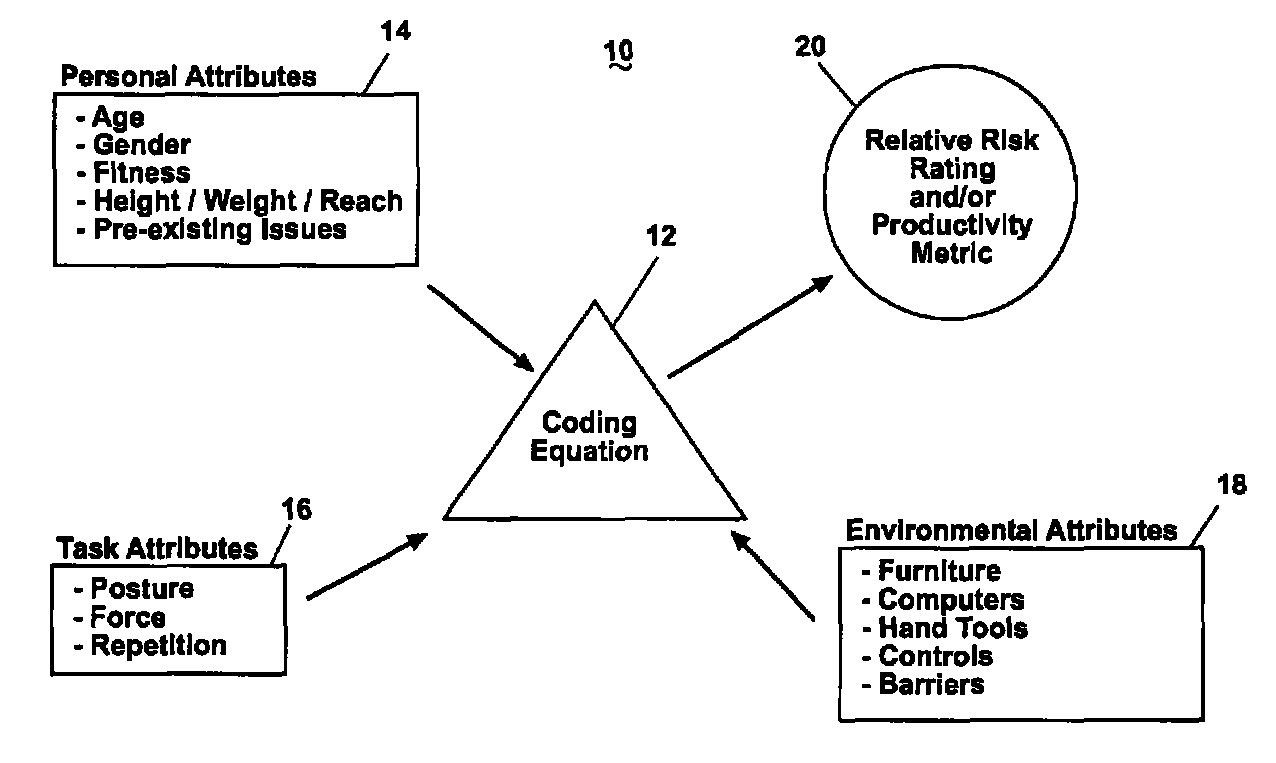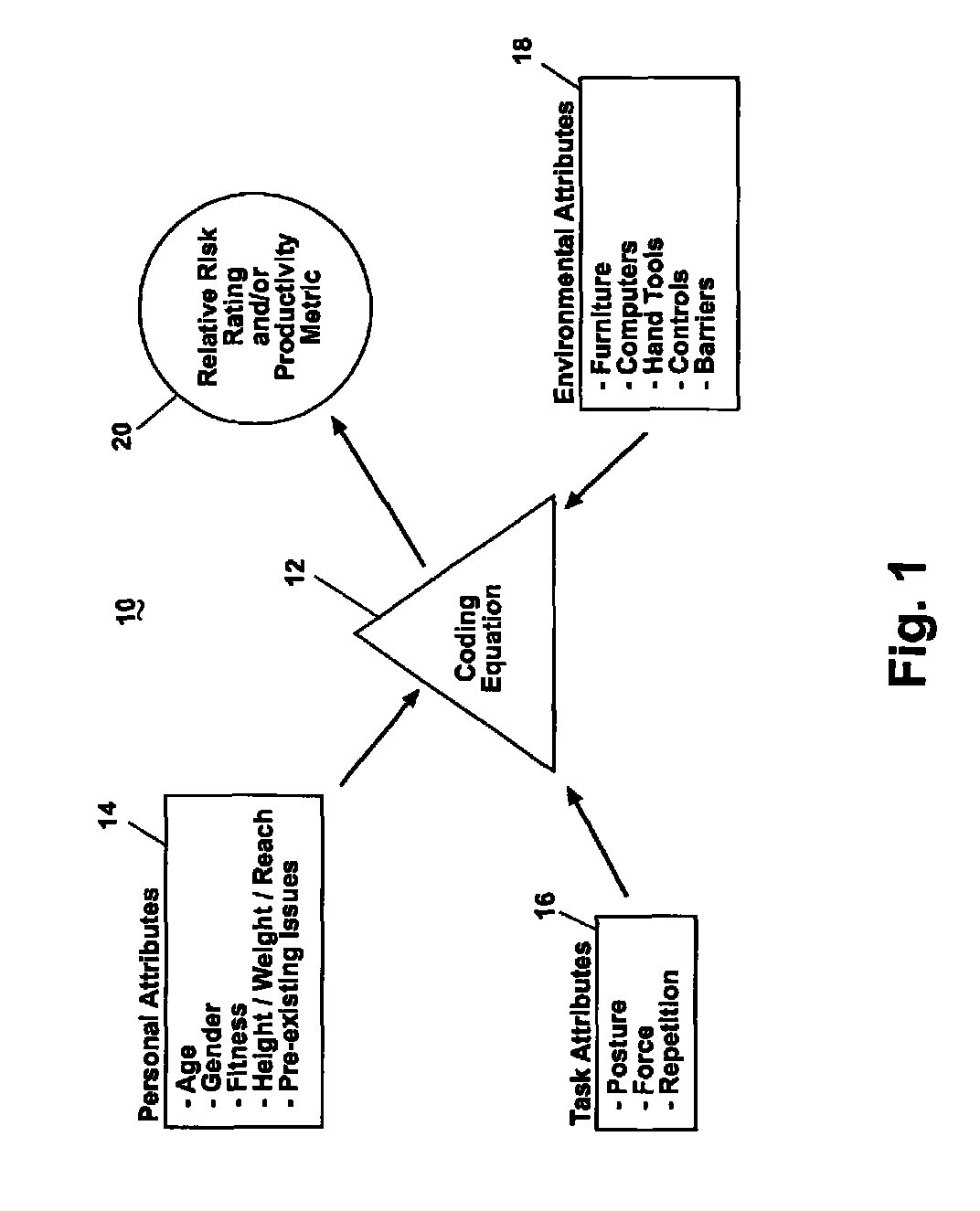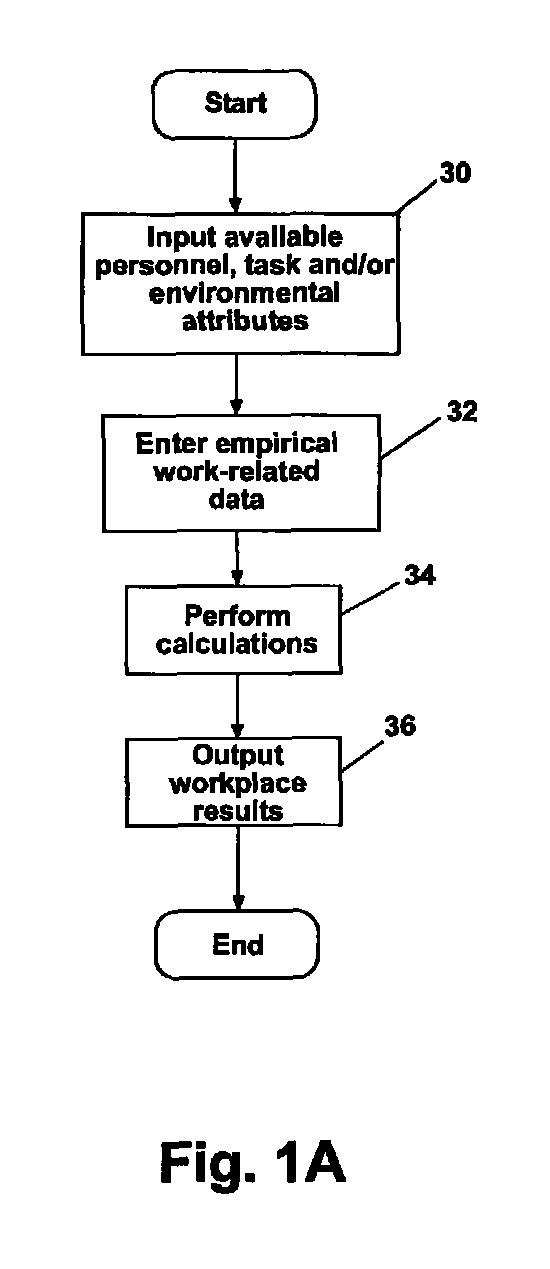Method for optimally determining appropriate ergonomics for occupants of a workspace
a technology for ergonomics and workspaces, applied in the field of optimally determining the appropriate ergonomics for occupants of workspaces, can solve the problems of inability to integrate the methods of assessing the ergonomics of a work-related environment, inability to standardize the evaluation method of people, and inability to achieve satisfactory results in the measurement of ergonomics. achieve the effect of easy visual auditing
- Summary
- Abstract
- Description
- Claims
- Application Information
AI Technical Summary
Benefits of technology
Problems solved by technology
Method used
Image
Examples
example
A Workplace Office Application
[0171]One application of the system and method 10 according to the invention will now be described with respect to a general office workplace and the ergonomic scenarios typically encountered by workers therein.
[0172]A first step of this example relates to the collection, compilation and input of the personal attributes 14 of the workers in the office workplace. FIGS. 14-15 show a general human form with dimensions which can be helpful in determining the personal attributes 14 of each worker. Reference letters I-P can be found in FIG. 14 while reference letters G-H can be found in FIG. 15. These human form dimensions are summarized in the following table.
[0173]
RefDimensionDefinitionGShoulderHorizontal distance between the lateral mostBreadthaspects of the shoulder, measured with the subjectsitting erect.HHip BreadthHorizontal distance between the lateral mostaspects of the hip, measured with the subject sittingerect.IElbow Vertical distance from the sit...
case study 1
Female
[0232]The first case study environmental attributes 18 are:
[0233]
SectionEnvironmental AttributeScore1Shoulders and upper arms are stretched forward22No armrest13Wrist and hands rest on sharp edge14Monitor is too high1Environmental Attribute Score (A)5pts
[0234]The first case study personal attributes 14 (a simplified list of attributes is used for purposes of simplicity and illustration) are:
[0235]
Personal AttributeScore43-year-old female4No recent history of injury0Personal Attribute Score (B)4pts
[0236]The first case study task attributes 16 (again, a simplified list of attributes is used for purposes of simplicity and illustration) are:
[0237]
Task AttributeScoreAverage of Daily Computing Time = 1-4 hours1Task Attribute Score (C)1pt
[0238]Then, the relative risk rating (using the stratified table of rating categories listed above in the sample 80-point sacle) can be calculated as:
Relative Risk Rating=(A)·(B)·(C)=(5)·(4)·(1)=20=“Low Risk”
case study 2
Male
[0239]The second case study environmental attributes 18 are:
[0240]
SectionEnvironmental AttributeScore1Head is not upright21Ulnar deviation22No armrest13Wrist and hands rest on sharp edge14Monitor is too low1Environmental Attnbute Score (A)7pts
[0241]The second case study personal attributes 14 (a simplified list of attributes is used for purposes of simplicity and illustration) are:
[0242]
Personal AttributeScore45-year-old male3No recent history of injury0Personal Attribute Score (B)3pts
[0243]The second case study attributes 16 (again, a simplified list of attributes is used for purposes of simplicity and illustration) are:
[0244]
Task AttributeScoreAverage of Daily Computing Time = 4-7 hours2Task Attribute Score (C)2pts
[0245]Then, the relative risk rating (using the stratified table of rating categories listed above in the sample 80-point scale) can be calculated as:
Relative Risk Rating=(Â)·(B)·(C)=(7)·(3)·(2)=42=“Moderate Risk”
[0246]As can be seen, each individual in a workpla...
PUM
 Login to View More
Login to View More Abstract
Description
Claims
Application Information
 Login to View More
Login to View More - R&D
- Intellectual Property
- Life Sciences
- Materials
- Tech Scout
- Unparalleled Data Quality
- Higher Quality Content
- 60% Fewer Hallucinations
Browse by: Latest US Patents, China's latest patents, Technical Efficacy Thesaurus, Application Domain, Technology Topic, Popular Technical Reports.
© 2025 PatSnap. All rights reserved.Legal|Privacy policy|Modern Slavery Act Transparency Statement|Sitemap|About US| Contact US: help@patsnap.com



